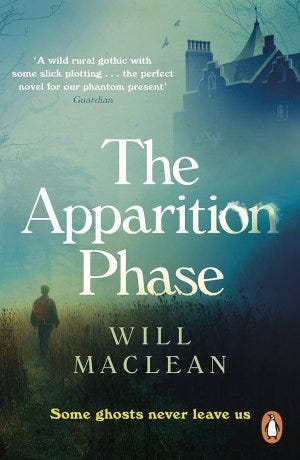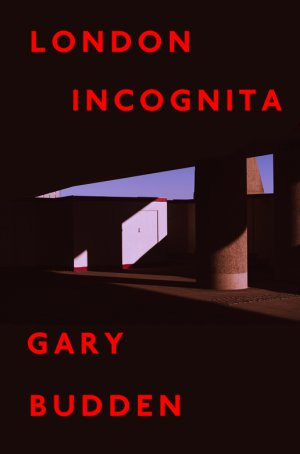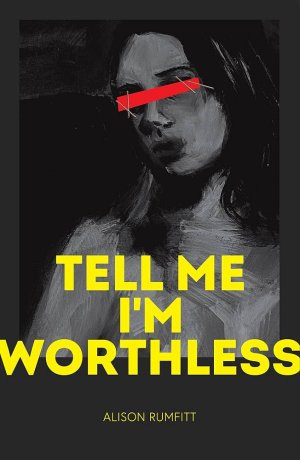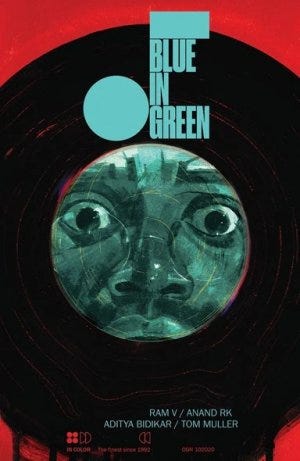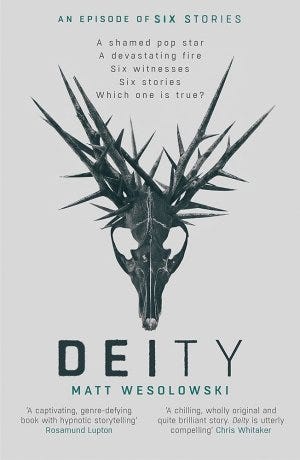It is – as you cannot fail to have noticed – 𝓼𝓹𝓸𝓸𝓴𝔂 𝓼𝓮𝓪𝓼𝓸𝓷. Lately I’ve had very little free time in which to write (hence the lack of updates since August), but I couldn’t let October pass without recommending some suitably creepy reads. So, with two weeks to go until Halloween, here are my personal picks from the last 5 years of reading horror.
Municipal Gothic by Ray Newman (2022)
I’m kicking things off with a very recent favourite: a short story collection that’s basically non-stop highlights; the definition of all killer, no filler. I thought I was going to love Municipal Gothic from the title alone, and I knew I was going to love it when I read the first story, ‘The Curse Follows the Seed’. It’s atmospheric, but also funny and touching, a great portrait of its protagonist’s life. It’s a story that instantly told me everything I needed to know about Newman as a writer and the project of this book.
Several masterpieces follow: ‘Modern Buildings in Wessex’, ‘Protected by Occupation’, ‘Director’s Cut’; not just my favourites from this book, but among the very best short stories I’ve read in the past few years. This is a remarkably coherent piece of work: a book full of excellent ghost stories that is also so clear in its aims and thesis. Newman’s fiction places great value on occupations and places (and lives) thought of as ‘ordinary’, and the stories are almost always threaded with humour. This is a collection bursting with original ideas, and as you might expect, the sense of place is a major highlight too.
Knock Knock, Open Wide by Neil Sharpson (2023)
Imagine Tana French writing a folklore-infused horror novel, and you have Knock Knock, Open Wide. This is a book that won’t be for everyone, simply because there is just a lot of stuff in it; it’s not one neat storyline, but a bunch that overlap and entwine, and there’s a lot of character work, details that could feel irrelevant if they weren’t so beautifully crafted.
It’s about Etain, who is involved in a freak accident that leads her into a series of bizarre horrors, and how that night changes the rest of her life. It’s about Ashling, her daughter, and the woman Ashling falls in love with. It’s about a long-running TV series remembered differently by everyone who watched it (the kind of plot device I find irresistible even when done lazily – used unusually well here). It’s dark and sinister, but full of life and love, too.
Hare House by Sally Hinchcliffe (2022)
An unnamed woman leaves London to ‘start a new life’ in rural Scotland. She settles in the tiny community surrounding a country estate, where it soon becomes clear the locals not only believe in witches, but also regard them as an active threat.
Hare House wasn’t promoted very well when it first came out, and upon picking it up, I feared it might be derivative. I couldn’t have been more wrong: this book is a true original. Any cliches in the plot are made entirely new by masterful plotting, fascinating characters, sparing deployment of tension and eeriness, and, most of all, VOICE. This is only Hinchcliffe’s second novel, but she writes like an author at the absolute top of their game – sharp as a knife, not a sentence wasted. Employing landscape beautifully, making the story just uncanny enough, it’s note-perfect all the way to the bravura ending, which made me almost squeal with glee.
The Apparition Phase by Will Maclean (2020)
Evocatively set in the ‘haunted 1970s’, The Apparition Phase begins with twins Tim and Abi attempting to fake a spirit photograph. Their plan works rather too well (they scare a classmate so much she passes out), and the ramifications of the incident take over the twins’ lives. From there, the book splits off into two parts: one about a missing person, one about ghost hunting.
The first hundred pages are brilliant, and then Maclean takes things in an entirely different direction. At first I was dismayed by this. Gradually, though, I came to recognise it as a stroke of genius. The decision to open up Tim’s world brings such depth to the story. It all culminates in an indelible sequence traversing the Suffolk countryside by night, a journey as metaphorical and haunted as it is physical. I loved both the broad details and the specifics of The Apparition Phase: its themes in general, but also the level of detail we’re given about settings, characters and relationships. The result is chilling, absorbing and emotive – altogether, one of the best literary ghost stories I’ve read.
You Let Me In by Camilla Bruce (2020)
Reclusive novelist Cassandra Tipp disappears, leaving a manuscript in which she claims to have had a lifelong faerie companion, ‘Pepper-Man’. According to her, the presence of this creature explains many strange events in her life (for example, the unsolved murder of her husband). Her therapist has a different take: Cassie invented the character to make sense of childhood abuse, and could never let go of the fantasy. Which story is true?
I didn’t immediately love You Let Me In: Bruce has a penchant for purple prose, and her style sometimes borders on cheesy. Yet, slowly but surely, I was drawn in. Cassie’s account of Pepper-Man – horrible and gorgeous, sickening and seductive – had me bewitched. This is a powerful dark fairytale that keeps you wondering, hoping and guessing about the reliability of the narrator’s claims. It’s brought to life with irresistible folkloric detail.
London Incognita by Gary Budden (2020)
I love books like this: collections of short stories with subtle links between them, the kind of connections that reveal themselves incrementally as you read. Books that slowly build an increasingly rich world, one you can get to know in bits and pieces but only understand in full when you reach the end. In London Incognita we encounter a kaleidoscope of Londons, a seething mass of worlds glimpsed around corners, down alleyways, in grimy liminal spaces. Yet every story feels like it’s essential to the bigger picture.
It’s a thrilling fusion of horror fiction and psychogeography with zine culture, punk music and pulp fiction – a style that really is all Budden’s own, and realised to its full extent here. Whenever I came across a name or a phrase in one story that I recognised from another, I felt like it was whispering a secret to me.
A History of Fear by Luke Dumas (2022)
A History of Fear is presented as a manuscript written by convicted murderer Grayson Hale, an American student in Edinburgh who killed a classmate and claimed the Devil made him do it. It’s gripping from the very beginning. This is a novel about repression, religion, the dangers of denying oneself and generational trauma – but it’s also just a perfect ghost story: brimming with atmosphere, full of the kind of creeping, swirling uncertainty that makes great horror. It walks a tricky path – balancing an emotional undercurrent against supernatural threat – with ease, while the pure intrigue and tension generated by the central question (is Hale really communing with the Devil?) never let up. I raced through it so quickly I barely paused for breath.
Where the Dead Wait by Ally Wilkes (2024)
My go-to description for this book is ‘The Terror meets Heart of Darkness’. Years after an infamous failed expedition, a captain with a sullied reputation must return to the Arctic in search of a lost party that includes his former lieutenant. Wilkes has a masterful command of description and detail, so while this is not a quick read, it is thoroughly immersive and enthralling at every level: setting, atmosphere, character. I fell in love with the characters in this – it’s one of those books I still think about all the time, almost a year after reading it. Gory and gorgeous; a blood-soaked, frostbitten treat.
Black Mountain by Simon Bestwick (2021)
Do you enjoy found-footage horror? Mixed-media narratives? Stories about cursed places? Black Mountain is for you. It’s made up of multiple narratives in a variety of formats, each focusing on a different strange incident on or around the same mountain, Mynydd Du. There are many layers of storytelling here (it gets meta, with the author even jumping into the story himself) and all sorts of convincing extra material – interview transcripts, articles, diary entries, letters, forum posts – to flesh out the story.
Many books of this type resort to a more conventional approach when it’s time to tie all the threads together, but in Black Mountain the montage-style narrative is sustained to the end. Which really helps its effectiveness as horror (it feels so real, and gets genuinely creepy at times). I had the time of my life reading this, and came away from it amazed that it isn’t better-known – in fact, writing this makes me want to read it again straight away.
Tell Me I’m Worthless by Alison Rumfitt (2021)
Three years ago, three girls – Alice, Ila and Hannah – entered the House, a corrupted, haunted place. In the aftermath, Hannah is gone and Alice and Ila’s relationship is radically transformed. Ultimately, the two survivors must go back.
Rumfitt turns the haunted house trope inside out (and then some) with a story about fascism, trauma, guilt, gender, and what it’s like to try and perform an acceptable impression of a functioning human being after bad shit has happened to you. It’s electrifying. It’s disgusting. It’s hot. It actually made me THINK. It’s the best book about what it is to be a woman (specifically in modern Britain) that I’ve read in years, possibly ever. Tell Me I’m Worthless is an experience, and it will haunt you.
Blue in Green by Ram V and Anand RK (2020)
I’d be the first to admit that the plot of Blue in Green isn’t the most original. A once-promising musician becomes fixated on uncovering the history of another forgotten artist; the mania leads him down a dark and strange path. However, this is a graphic novel, and the stunning art elevates it to something more than just another horror story about a man losing himself in obsession. Every page is a gorgeous riot of colour filled with glowing lights, hyperreal raindrops, blurring neon and ghostly figures. It’s mesmerising and endlessly beautiful.
Deity by Matt Wesolowski (2020)
I have been a BIG fan of Wesolowski’s Six Stories – a series of horror/thriller novels revolving around a true crime podcast – for years. (How big a fan? Well, I use a spreadsheet to track how many times I’ve read each book, and in which year, because I worry about diminishing their power through too many rereads.) My favourite is Changeling, the third book in the series, but Deity (the fifth) is easily the best to read as a standalone.
In Deity, podcast host Scott King investigates the life and death of Zach Crystal, an enigmatic singer accused of inappropriate relationships with young fans. As ever, Wesolowski crafts an engrossing mystery laced with elements of horror (here the ‘Frithghast’, a creature said to roam the woods where Crystal built his mansion), but it’s typically thought-provoking too – excellent on questions around power, idolatry and celebrity, the role of abuse in shaping an abuser, and ‘separating the art from the artist’.






